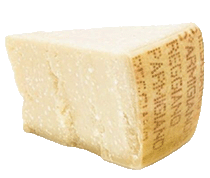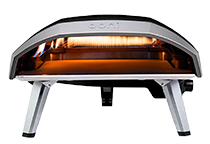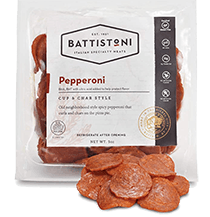High temperature cheese, often referred to as high-temp cheese (or even sometimes written as hi temp cheese), is a specialty cheese that maintains its shape and texture when exposed to high heat. This quality makes it an ideal ingredient for cooked meat products like sausages and snack sticks where standard cheese would melt and disperse.
The ability to withstand temperatures up to around 400º F ensures that the cheese chunks remain intact, providing a burst of flavor and a desirable texture in the final product.
The varieties of high heat cheese include flavors like cheddar, hot pepper, mozzarella, and Swiss, each bringing its unique taste profile and melting properties suited to different culinary applications. These cheeses are crafted to resist melting away, allowing home cooks and professionals alike to achieve consistent and appetizing results in their cooking endeavors.
Key Takeaways
- High-temp cheeses are designed to resist melting and retain form in high heat.
- These cheeses come in a variety of flavors, each contributing to the dish’s overall taste.
- High-temp cheese is essential for adding cheesy goodness to cooked meat products without losing texture.
Table of Contents

Fundamentals of High Temperature Cheese
In this section, I will clarify what high temperature cheese is, explore its varieties, and distinguish how it differs from regular cheese. I aim to provide an understanding of its importance in culinary applications due to its unique melting characteristics.
Or if you like watching videos instead, check one out here for an easy explanation:

What Is High Temperature Cheese?
High temperature cheese, designed to withstand higher cooking temperatures without melting away, is a versatile ingredient in the culinary world. Key to its functionality is its melting point, which is higher than that of regular cheese, and it maintains this integrity up to a certain heat threshold, often around 400° F (204° C).
This makes high temperature cheese an excellent choice for inclusion in products like sausages and grilled dishes, where it retains shape and texture.
High Temp Cheese Varieties
The most common varieties of high temperature cheese include:
- Cheddar: Renowned for its balanced flavor, it adds a creamy consistency to meals.
- Swiss: Characterized by its distinct holes and nutty taste.
- Mozzarella: Valued for its mild flavor and smooth texture.
- Pepper Jack: Offers a spicy kick with flecks of chili pepper throughout.
Each of these cheeses is processed to withstand high cooking temperatures, catering to various flavor profiles and dish requirements.
High Temp Cheese vs Regular Cheese
The key differences between high temperature cheese and regular cheese are their heat resilience and applications in cooking. High temperature cheese is specifically manufactured to resist melting at temperatures where regular cheese would lose its form.
This makes it indispensable for foods that are exposed to heat for prolonged periods, ensuring that the cheese does not render out fat and become greasy, but rather stays intact, adding a gooey, satisfying texture and robust flavor to the final product.
Making High Temp Cheese

In this section, I’ll demonstrate the importance of precision in each step of creating homemade high-temp cheese, focusing on the foundation of cheese making, curdling, and specific heat treatments.
Cheese Making Basics
The initial step in making high-temp cheese is to select the right type of milk. I prefer using full-fat milk for a richer taste. Heating the milk is crucial; I do so gradually in a pot to around 150° F to ensure optimal curdling without scorching.
Curdling Process
I then introduce a curdling agent, such as rennet, to the milk. This causes the milk to curdle, separating into curds and whey. For homemade sausage incorporating high-temp cheese, achieving firm curds is essential, as they withstand higher cooking temperatures.
Heat Treatment
During heat treatment, I maintain a consistent temperature that stabilizes the curds. This empowers the cheese to endure the temperatures encountered when cooked in homemade sausage, preserving its shape and adding a creamy texture and flavor to the dish.
Using High Temp Cheese

High temp cheese is a sought-after ingredient for meat enthusiasts who wish to add a savory, melty element to their homemade sausage or grilled meats. It’s specifically engineered not to ooze out during high-heat cooking, making it ideal for maintaining both texture and flavor.
Incorporating Cheese Into Sausages
When I make sausage, I consider high temp cheese an essential component. It’s ideal for adding chunks of cheesy goodness that don’t lose their integrity when exposed to the heat of cooking. Here’s how I do it:
- Choose your Cheese: I opt for high temp varieties like cheddar or pepper jack to add either a sharpness or a spicy kick.
- Cut the Cheese: I dice the cheese into 1/4 to 1/2 inch cubes. This size ensures the cheese doesn’t overpower the meat but remains noticeable.
- Mix with the Meat: I gently fold the cheese cubes into my ground meat mixture, making sure they’re evenly distributed.
This technique also applies to snack sticks, where the cheese adds a burst of flavor in every bite.
Cooking With High Temp Cheese
When cooking with high temp cheese, I keep a close eye on the temperature. Whether I’m grilling burgers or stuffing sausage casings, I ensure that my ingredients are well-seasoned before adding the cheese to balance the flavors effectively.
- Grilling Burgers: Before placing them on the grill, I embed small chunks of high temp cheese within the patties.
- Making Sausages: I always mix the cheese in at the last minute when the sausage meat is already seasoned, ensuring the seasoning is thoroughly incorporated before the cheese is added.
Table: High Temp Cheese in Cooking
| Cooking Method | Ingredient Incorporation | Tips |
|---|---|---|
| Sausage Making | Last step before casing | Ensure meat is chilled to keep cheese from melting |
| Grilling | Mixed into patties or on top | Grill over medium heat to melt cheese without burning |
By using high temp cheese, I guarantee the integrity of cheese-filled dishes, providing flavorful, gooey pockets that make every bite more enjoyable.
Preservation and Storage

In handling high temperature cheese, I prioritize maintaining its freshness and quality through proper storage techniques. Let’s delve into how you can optimize shelf life and establish the best storage conditions.
Shelf Life and Freshness
I’ve learned that high temperature cheese, like all cheese varieties, has a finite shelf life, which is critically dependent on storage practices. To maximize freshness, I always adhere to a strict timeline. Typically, high temperature cheese retains its quality for up to 6 months when stored correctly.
Optimal Storage Conditions
To preserve the quality of my high temperature cheese, I focus on creating an ideal storage environment. I refrigerate the cheese at a consistent temperature range of 34 to 38º F. This temperature range is instrumental in slowing down the growth of any harmful bacteria and maintaining the cheese’s integrity.
- Refrigeration: I store cheese in the vegetable or cheese drawer of my refrigerator, where temperatures are more consistent and slightly cooler.
- Air Flow: I wrap the cheese in materials such as cheese paper, parchment, or waxed paper, followed by a loose layer of plastic wrap to permit air flow and prevent drying out.
By following these practices, I ensure that the high temperature cheese I store remains fresh and high-quality for as long as possible.
Selecting and Purchasing
When I set out to purchase high-temp cheese, I focus on a few critical factors: quality, flavor profile, and appearance. The selection process is crucial to ensure that my dishes stand out with the bold flavors and creaminess that only the right cheese can provide.
Quality: I always opt for cheese with clear indications of high-quality production. This involves checking for freshness and looking at the specifics, such as whether the cheese is sourced from a reputable producer.
Flavor Profile: High-temp cheese comes in varieties like Pepper Jack and Cheddar. I consider the flavor intensity needed for my dish. For something with a kick, I choose Pepper Jack, with its spicy infusion of peppers. If I’m after a milder taste, a high-temp Cheddar is my go-to option.
Appearance: A uniform look with no cracks or dry edges is important to me as it reflects proper handling and storage, thus guaranteeing a better melt.
Aged Cheeses: For more nuanced flavors, I tend to lean towards aged cheeses. They bring complexity to a dish that only time can develop.
Here’s how I categorize my options:
| Cheese Type | Flavor Profile | Ideal Use |
|---|---|---|
| Pepper Jack | Spicy and bold | Burgers, sandwiches |
| High-temp Cheddar | Rich and milder | Sausages, meat dishes |
Finally, I recommend purchasing from local butchers or specialty food stores where staff can provide valuable advice. They usually have a selection tailored for those who appreciate gourmet flavors in homemade sausages and similar culinary creations. Online retailers are also a convenient source, offering a wide range of high-temp cheeses.
Frequently Asked Questions
In the following sections, I’ll address some common inquiries about high temperature cheeses, covering types, differences from regular cheeses, cooking applications, and storage tips.
What types of cheese are considered high temperature cheeses?
High temperature cheeses include types like Cheddar, Colby, and pepper jack. These cheeses are designed to withstand higher cooking temperatures without losing their shape or texture.
How is high temperature cheese different from regular cheese?
High temperature cheese is different because it has a higher melting point, which allows it to resist melting at temperatures where regular cheeses would become too soft or lose their form.
What are some popular uses for high temperature cheese in recipes?
This cheese is frequently used to add flavor and creaminess to dishes that involve grilling or smoking. It is ideal for things like burgers and sausages because it doesn’t lose its texture when exposed to high heat.
How can you incorporate high temperature cheese into homemade sausage?
To incorporate high temperature cheese into homemade sausage, it is often added in small cubes towards the end of the sausage-making process to ensure it maintains its texture when the sausage is cooked.
What are the shelf life and storage considerations for high temperature cheese?
Like other cheeses, high temperature varieties should be stored in the refrigerator. The shelf life can vary, but generally, if sealed and stored properly, it can last for several weeks up to a few months.
Can you create your own high temperature cheese, and if so, how?
Creating your own high temperature cheese at home involves gently heating curds and pressing them to expel whey, thereby firming up the curds to achieve the desired melting point and texture. Careful control of temperature during this process is crucial.













